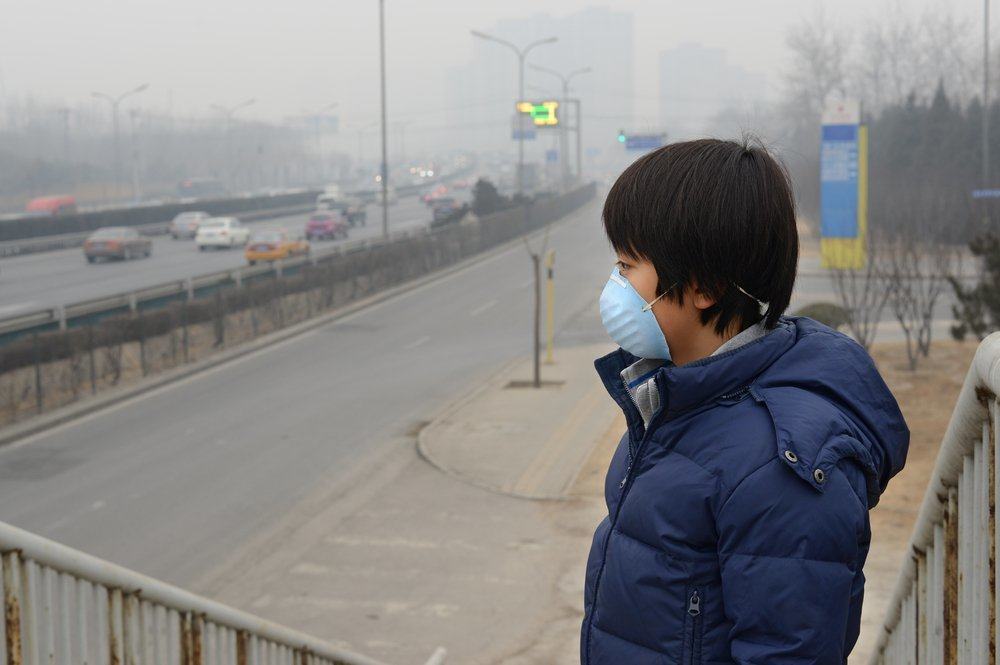Contents:
Medical Video: How does air pollution affect health?
Air pollution can increase a child's risk of developing mental illness, based on the findings of a new study. Even more worrying, this link is still present even at lower levels of air pollution.
Where did this study come from?
The research team from Umea University in Sweden analyzed data on air pollution exposure from more than 500,000 participants of children under the age of 18. The researchers then compared data with medical records and drugs prescribed for the treatment of mental illness. These drugs range from simple sedatives to antipsychotics.
The study found that a relatively small increase in the level of air pollution was associated with a significant increase in problems in psychiatric disorders treated. They found that children living in areas with higher concentrations of nitrogen dioxide, or NO2 - dangerous air pollutants - were more likely to undergo treatment using prescription drugs associated with long-term mental illness.
The study, published in the peer-reviewed journal BMJ Open, was the first to offer strong evidence of the relationship between air pollution and psychiatric conditions in children. The study then supports previous studies linking air pollution to mental illness and shows that even small increases in air pollution can have a dramatic effect on children's mental and cognitive health, and children especially are particularly vulnerable to poor air quality.
The impact does not only appear in high-polluting cities
"The result could mean that lower concentrations of air pollution, especially from traffic, can reduce psychiatric disorders in children and adolescents," said researcher Anna Oudin who led the research team, reported by Tech Times.
The World Health Organization (WHO) and the European Union have set limits on nitrogen dioxide at 40 mcg / m3 (micrograms per cubic meter). However, in many European cities such as London, the level of NO2 was found to exceed the prescribed limits. The study found that an increase of 10 mcg / m3 from NO2 was associated with an increase in cases of psychiatric conditions in children up to 9 percent. In addition, the same amount of increase in PM2.5 and PM10 particles has been associated with a 4 percent increase in cases of psychiatric disorders.
More worryingly, even in places with lower pollution levels, such as Sweden with air pollution limits of only 15 mcg / m3, the study still found similar associations. This shows that more polluted cities carry far higher risks.
For comparison, according to UI student research in 2012, air pollution levels in DKI Jakarta by transportation fumes reached 98.3 mcg / m3 in 2011 and pollution due to medium and large industries reached 57.95 mcg / m3. Reporting from Detik, the Ministry of Environment and Forestry conducted an evaluation of the level of air pollution in 2014. The findings show that North Jakarta ranks first as the city with the worst level of air pollution from 14 major cities in Indonesia - with a score of only 3.80%.
Why is air pollution more fatal to children?
What exactly are the compounds in the air environment that most affect children's health, and how this exposure results in limited fetal growth, preterm birth, and the development of respiratory diseases largely unknown. The study of the effects of air pollution on reproductive outcomes is still a developing area of science with many unanswered important questions, but more and more evidence is emerging that exposure to air pollution in early childhood puts them at a higher risk of adverse health effects, especially asthma and upper respiratory infections (ARI).
There are several biological reasons why small children may be more vulnerable to the effects of air pollution. The lungs, immune system, and child's brain are immature at birth and continue to develop rapidly until around the age of 6, and the layer of cells that line the inside of the respiratory tract is easily penetrated during this age period. Compared to adults, children also have a greater lung surface area in relation to their weight, and breathe 50% more air per kilogram of body weight.
The initial growth and development process is important for children's health in general, and therefore can also be an important time when exposure to air pollution can have lasting effects on future health. In addition, children tend to spend more time outdoors doing strenuous activities, such as playing sports, so they breathe more outside air than adults, who spend an average of about 90% of their time indoors.
The proven negative impact of air pollution on children's health
Quoted from the UCLA Institute of the Environment and Sustainability, one of the most comprehensive long-term studies to date that examines the impact of exposure to air pollution on children's respiratory health is a Children's Health study from the University of Southern California. The research team collected data from more than 6,000 children who attended public schools in 12 Southern California communities that were selected with varying levels of air pollution for a period of 8 years or more. This study has reported several important findings, including the short-term effects of air pollution, such as acute respiratory diseases and asthma attacks, and long-term health effects, such as chronic respiratory disease and the development of asthma.
For example, researchers found that short-term increases in ozone concentration were associated with increased school absenteeism due to respiratory disease. Now there is a lot of evidence from this and many other studies that show that ozone and particles aggravate symptoms in asthmatic children. CHS researchers also report reduced lung function and an increase in chronic cough and chronic bronchitis in children and adolescents who are exposed to high levels of air pollution, especially those who live in areas with high particle concentrations.
Generally researchers agree that air pollution can trigger an asthma attack and worsen asthma symptoms, but studies have not provided firm evidence that it can cause asthma to develop.
READ ALSO:
- The Importance of Using Car Seats for Children
- Differentiating Blood Vomiting With Blood Cough
- What Is the Difference between Asthma in Children and Adults?












